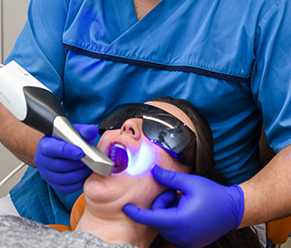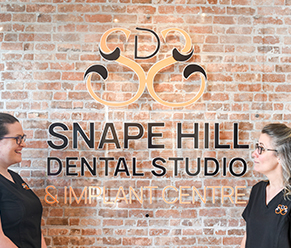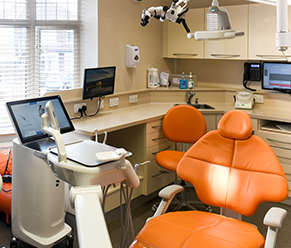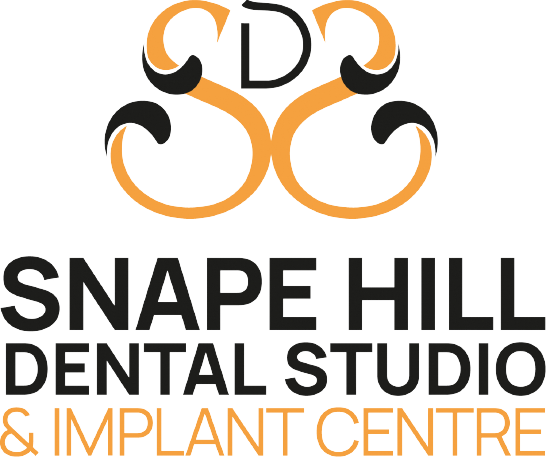- 95 Snape Hill Lane
- Dronfield
- Derbyshire
- S18 2GN


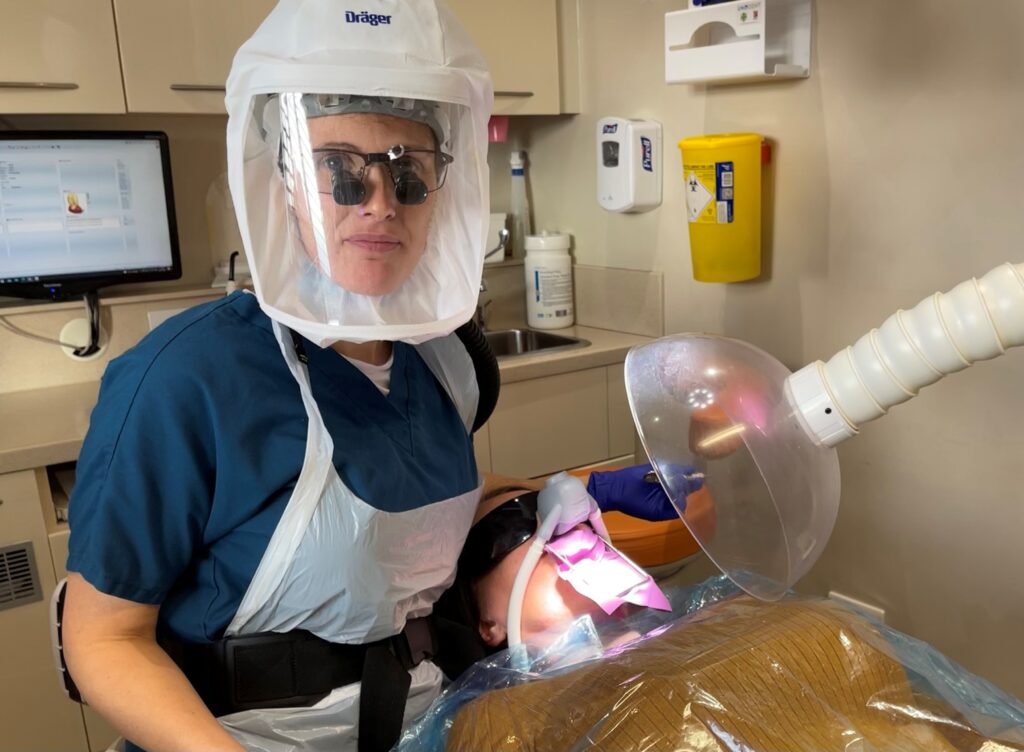
Ellen uses the Safe Mercury Amalgam Removal Technique (SMART), developed by the IAOMT, as a template for treating patients. The exact protocol is adapted for each patient with regard to their specific medical needs and personal preferences. These precautions are not fail-safe, have not been scientifically validated and therefore cannot to be taken as complete protection from mercury exposure.
The protocol Ellen uses is summarized as follows:
No charge is asked for the execution of this protocol, just the cost of the new filling is asked.
Notably, no evidence exists demonstrating the efficacy of SMART (or other) amalgam removal techniques, there is ample incontrovertible evidence showing that patients are exposed to mercury during the placement and removal of dental amalgam using standard techniques [Sandborgh-Englund et al. 1998]. There is also evidence showing how patients are exposed to mercury during the lifetime of the filling [Yin et al., 2016].
The current guidance [see https://bda.org/amalgam] suggests that any mercury that is released represents a minuscule amount that is easily handled by the body. Whilst there is no doubt that mercury is a suitable restorative material for the vast majority of patients there is potential for outliers, for whom the standard guidance is potentially inadequate. There are also patients who seek to remove amalgam for aesthetic reasons.
There are established and hypothesized pathways for mercury toxicity to emerge and a thorough treatment of the subject is beyond the scope of the current document. However, it is useful to provide a brief review of the literature relating to the area.
Elemental mercury, as mercury occurs in amalgam, is known to be toxic, however it is the lack of bio-availability of elemental mercury that enables it to be safely used in general dentistry. The consequence is that the exposure to elemental mercury necessary to cause illness needs to be significant in both duration and amount, and even then, the individual needs to be somehow medically compromised for adverse effects to emerge. Whilst thought to be rare, anecdotal evidence suggests this might be more common than is widely perceived.
There are instances where the mercury release is accelerated by tooth grinding [Barregård et al. 1995; Sällsten et al., 1996]. Also, when a gold restoration is placed in direct contact with an amalgam restoration, and bruxing has caused sufficient wear for both amalgam and gold surfaces to be exposed in the mouth [Fusayama et al., 1963; Plevera, 1989; Zohdi et al., 2012]. This example creates both significant duration and exposure, as the electro-galvanic effect is capable of accelerating the corrosion of the amalgam component and causing the rate of mercury release to be significantly increased. There are those who believe this electro-galvanic effect is possible without direct contact between the restorations though there is no reliable evidence to support this.
Without a route toward a high level of exposure, there are hypothesized predispositions that are believed to reduce a patient’s ability to remove mercury from the body. For example, genetic predisposition (Zhou et al. 2017, Walin et al. 2020) is augmented by nutritional deficiencies and other illnesses. The difficulty is that while acute mercury toxicity is well understood in the medical literature (including other heavy metal toxicity), chronic heavy metal toxicity follows an elusive pattern of illness, which is not well understood.
At the Snapehill Dental Studio and Implant Clinic, Ellen is happy to remove amalgam in support of a patient’s ability to make decisions regarding their own healthcare. The basis of which is informed patient consent. Removal of amalgam is a medical procedure that is not without risk, and the consent document (link here) provides further details. Consent for this treatment needs to be made in the full understanding that the current guidelines (https://bda.org/amalgam) state that amalgam is a safe restorative material. Should you seek an opinion from another dentist, which you are free to do, they may advise against amalgam removal.
References:
Barregård, L., Sällsten, G., & Järvholm, B. (1995). People with high mercury uptake from their own dental amalgam fillings. Occupational and Environmental Medicine, 52(2), 124-128.
Blayney, M. B. (2001). The need for empirically derived permeation data for personal protective equipment: the death of Dr. Karen E. Wetterhahn. Applied occupational and environmental hygiene, 16(2), 233-236.
Harada, M. (1995). Minamata disease: methylmercury poisoning in Japan caused by environmental pollution. Critical reviews in toxicology, 25(1), 1-24.
Pleva, J. (1989). Corrosion and mercury release from dental amalgam. Journal of Orthomolecular Medicine, 4(3), 141-158.
Sällsten, G., Thoren, J., Barregård, L., Schütz, A., & Skarping, G. (1996). Long-term use of nicotine chewing gum and mercury exposure from dental amalgam fillings. Journal of dental research, 75(1), 594-598.
Sandborgh-Englund, G., Elinder, C. G., Langworth, S., Schütz, A., & Ekstrand, J. (1998). Mercury in biological fluids after amalgam removal. Journal of dental research, 77(4), 615-624.
Takao Fusayama, Tsuneo Katayori and Sunao Nomoto J DENT RES 1963 42: 1183
Wallin, C., Friedemann, M., Sholts, S. B., Noormägi, A., Svantesson, T., Jarvet, J., … & Wärmländer, S. K. (2020). Mercury and Alzheimer’s Disease: Hg (II) Ions Display Specific Binding to the Amyloid-β Peptide and Hinder Its Fibrillization. Biomolecules, 10(1), 44.
Yin, L., Yu, K., Lin, S., Song, X., & Yu, X. (2016). Associations of blood mercury, inorganic mercury, methyl mercury and bisphenol A with dental surface restorations in the US population, NHANES 2003–2004 and 2010–2012. Ecotoxicology and environmental safety, 134, 213-225.
Zhou, S., Luoma, S. E., Armour, G. E. S., Thakkar, E., Mackay, T. F., & Anholt, R. R. (2017). A Drosophila model for toxicogenomics: genetic variation in susceptibility to heavy metal exposure. PLoS genetics, 13(7), e1006907.
Zohdi, H., Emami, M., & Shahverdi, H. R. (2012). Galvanic corrosion behavior of dental alloys. Environmental and industrial corrosion: practical and theoretical aspects. Rijeka: InTech, 157-68.
Back to Cosmetic Dentistry“Absolutely brilliant treatment. My broken tooth now looks like new! I am really impressed by…”
“Gill was lovely with my daughter today; she was really worried about having a filling.…”
“Ellen was great, she made me feel comfortable and made the experience much easier and…”
“Had a smile makeover with whitening and composites, Great results love my smile now.”
“Very friendly, professional, so kind and considerate to my sons. ASD and special needs”
“The replacement crowns are fitted – they look really good and achieve the result I…”
“Everyone I have met at the surgery was friendly, approachable and above all knowledgeable. This…”
“Since becoming a patient of yours I have experienced a quality of dentistry and care…”
“Such lovely and genuine staff that make a visit to the dentist completely hassle free…”

